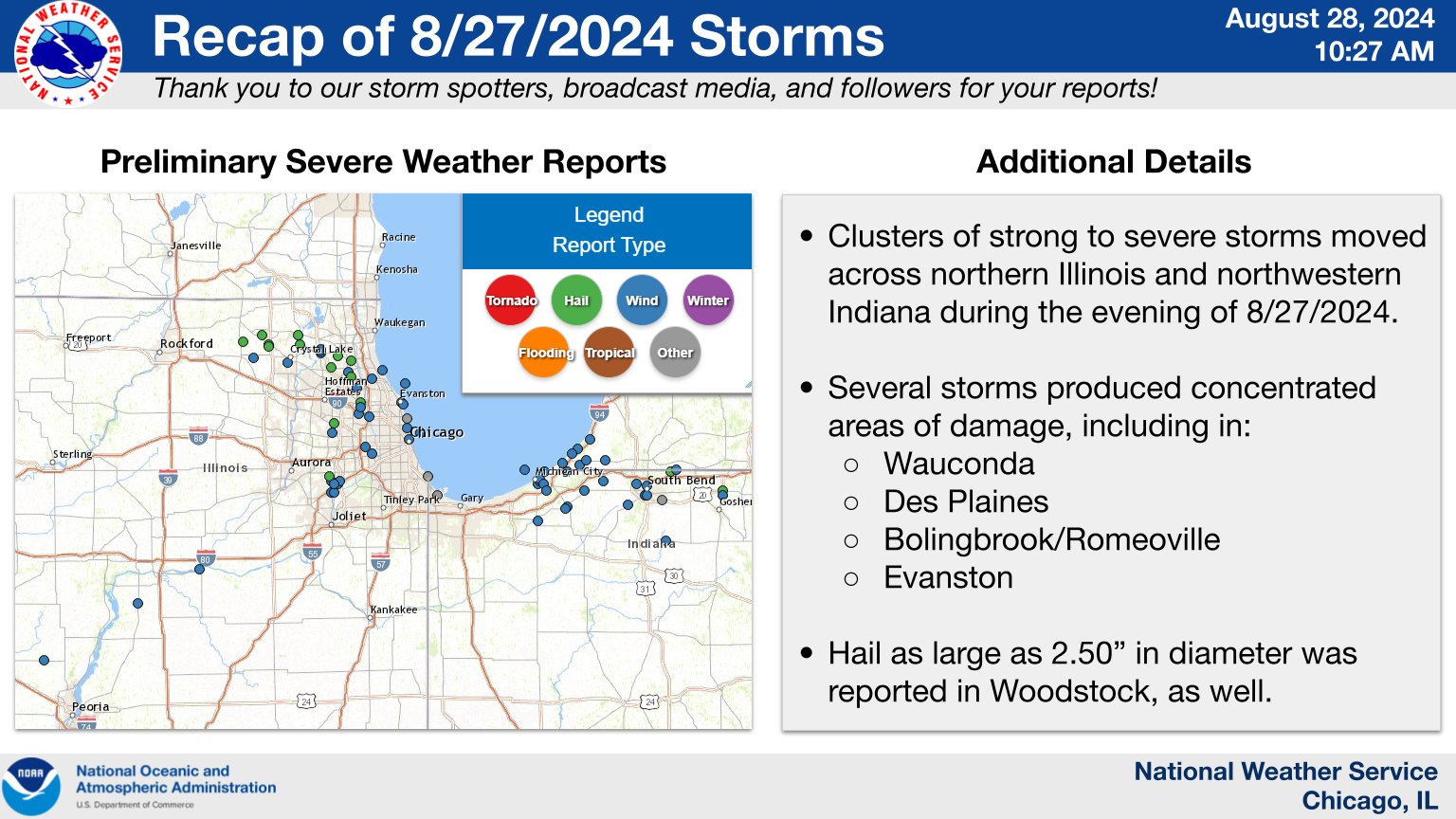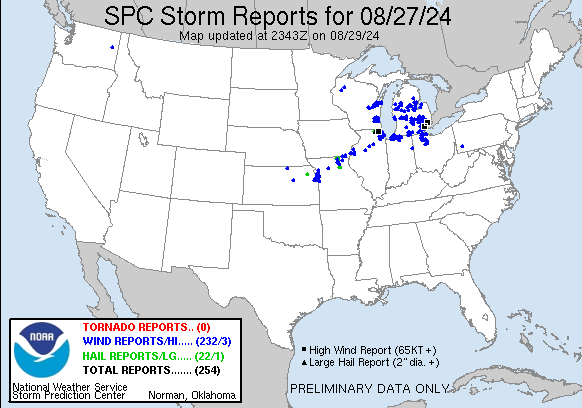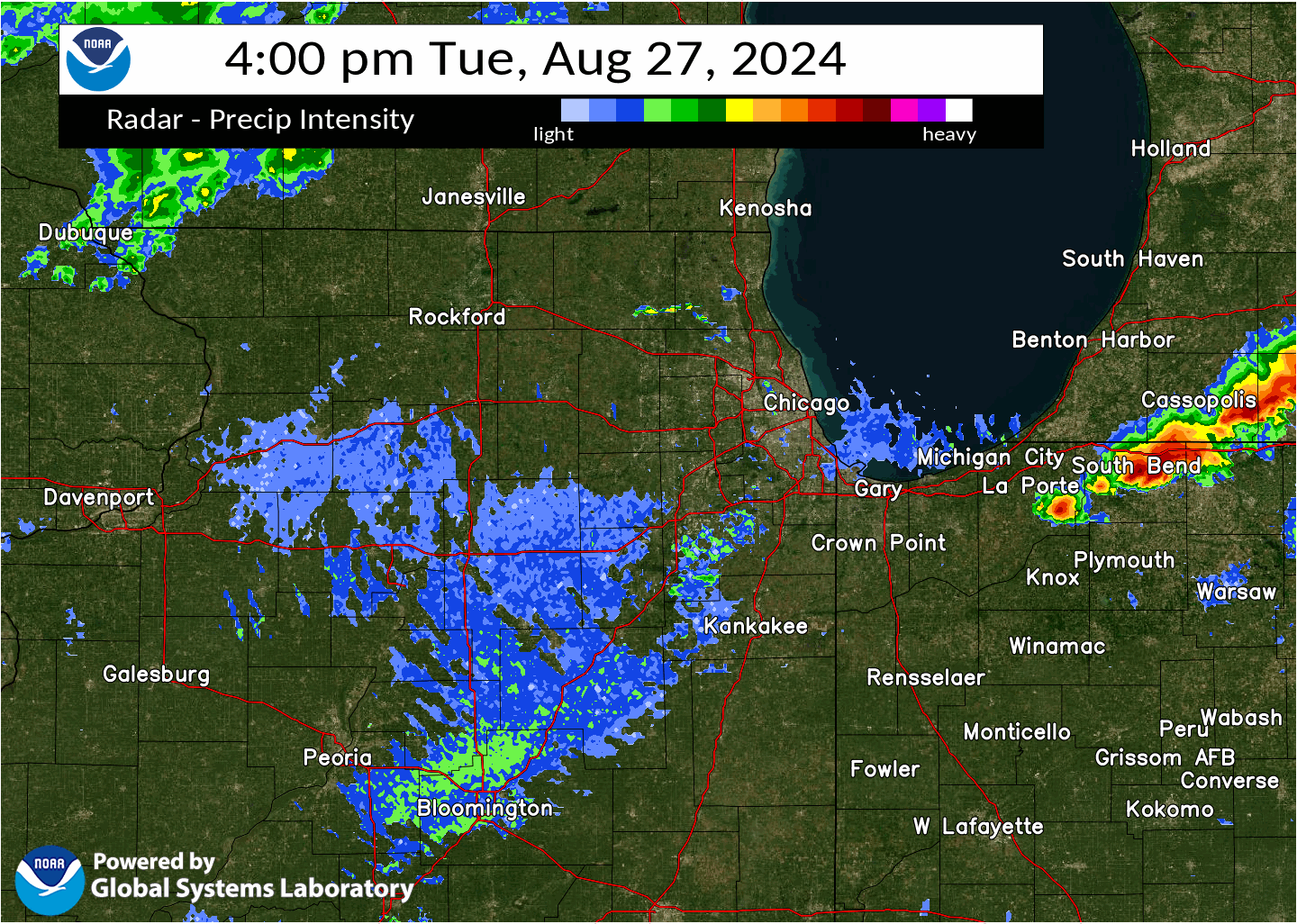Chicago, IL
Weather Forecast Office
|
|
Overview
Radar
|
6-hour radar loop (4 PM - 10 PM). Storms after 10 PM were sub-severe. |
Environment
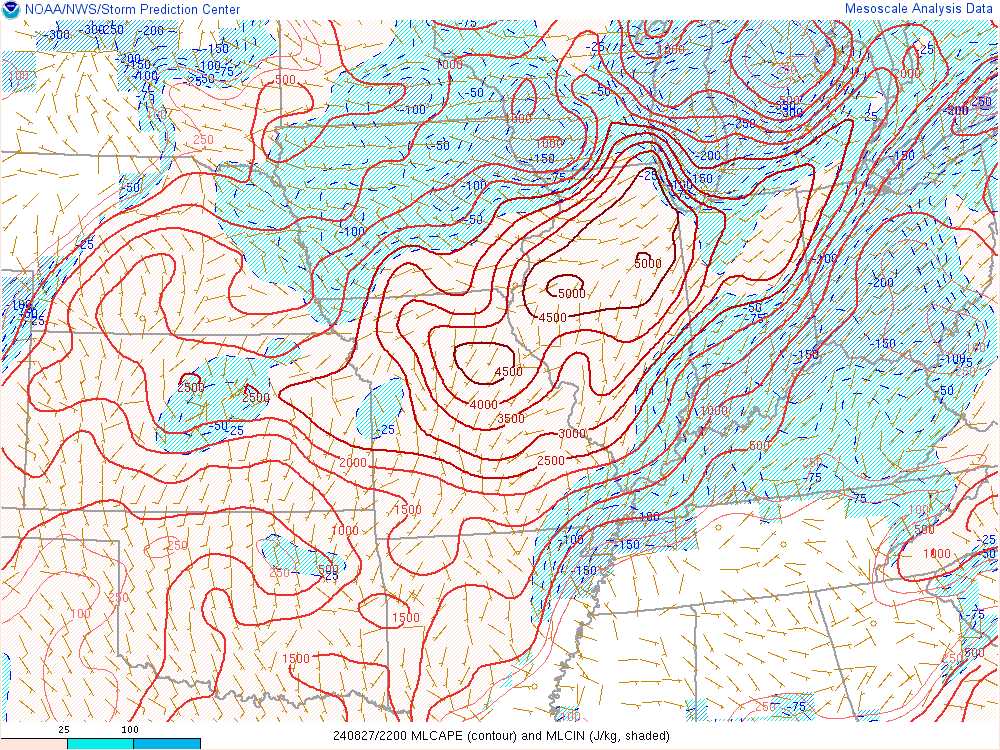 |
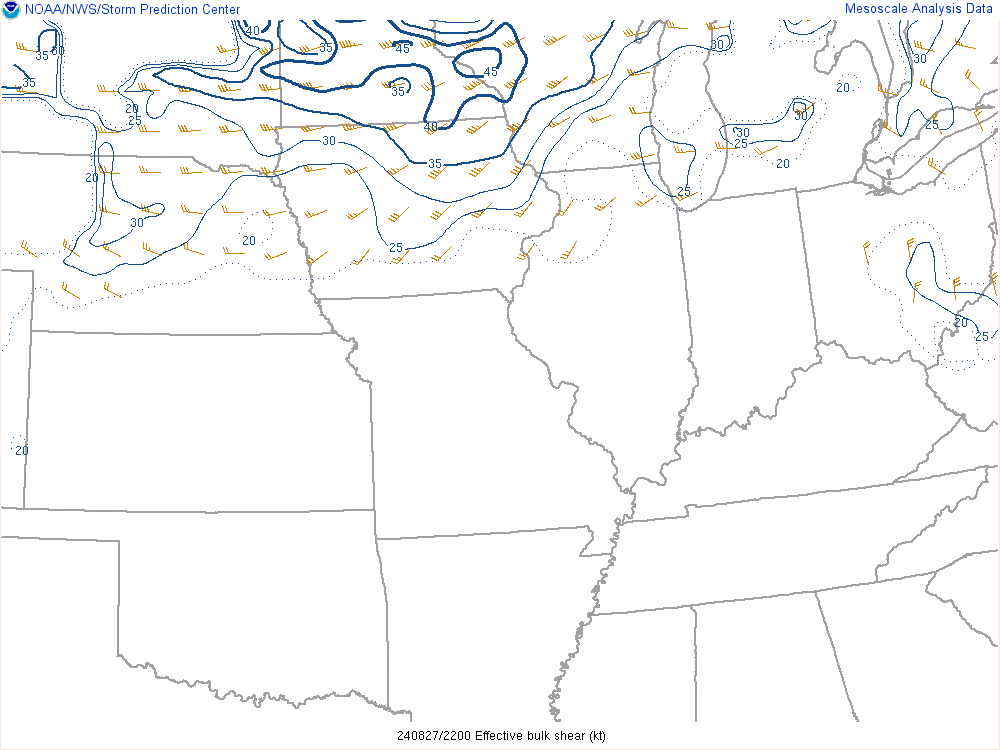 |
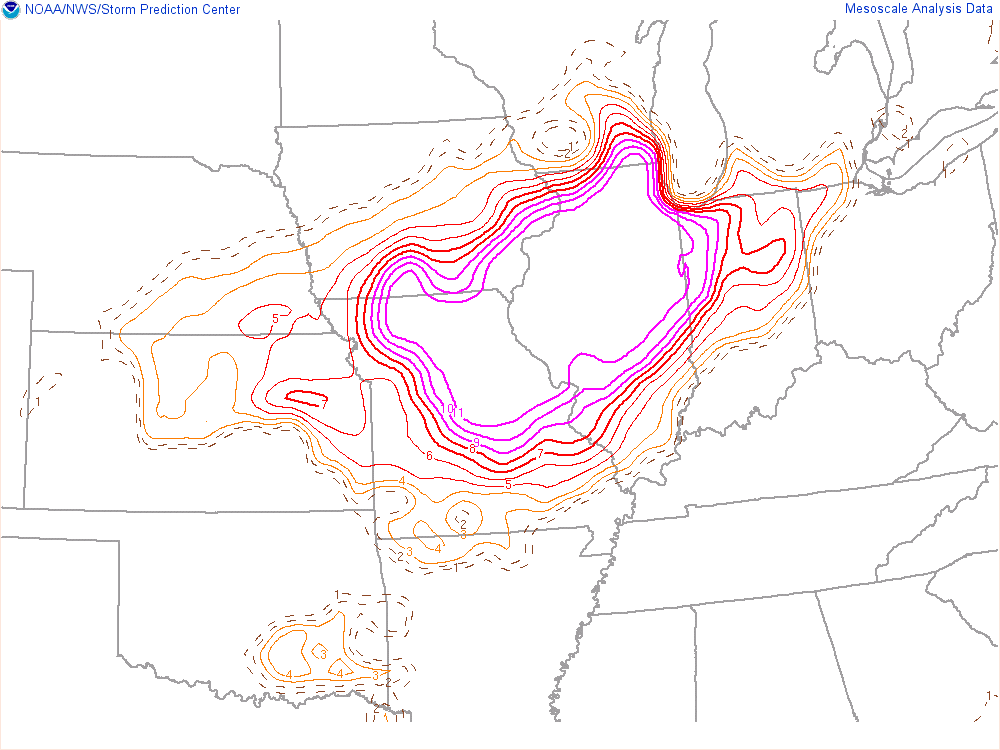 |
| Convective Available Potential Energy (CAPE), or a measure of "fuel" for thunderstorms at 5 PM. Values above 4,000 J/kg are supportive of explosive thunderstorm development. | Wind shear, or change of wind direction and speed from the surface to about 20,000 feet. Values are generally below 30 knots which is not particularly supportive of supercell (rotating) storms. | Microburst composite parameter, which highlights regions favorable for intense microbursts/downbursts. Values were exceptionally high over northern and central Illinois. |
Additional Information
Links:
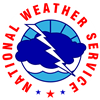 |
Media use of NWS Web News Stories is encouraged! Please acknowledge the NWS as the source of any news information accessed from this site. Additional recaps can be found on the NWS Chicago Past Events Page |
 |
Hazards
Enhanced Hazardous Weather Outlook
Hazardous Weather Outlook
National Briefing
Skywarn
Outlooks
Watch/Warning/Advisory Criteria
Snow Squall Warnings
Local Forecasts
Marine
Aviation
Fire
Text Products
Great Lakes Marine Portal
Lake Michigan Beach Forecast
El Nino
Snow and Ice Probabilities
Past Weather
Climate Plots
Weather Event Write-Ups
Stormdata
Holiday Climate Data
Education
Jetstream
Play Time for Kids
Student Opportunities
US Dept of Commerce
National Oceanic and Atmospheric Administration
National Weather Service
Chicago, IL
250 George J Michas Dr.
Romeoville, IL 60446
815-834-1435 8am-8pm
Comments? Questions? Please Contact Us.


